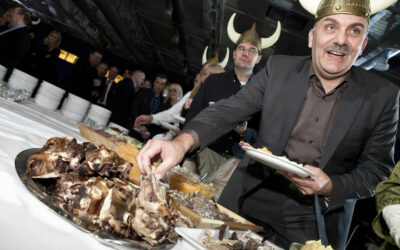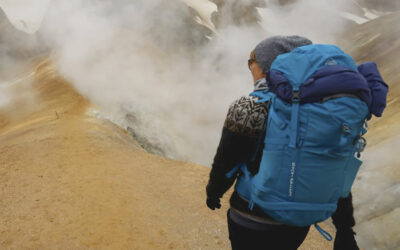Students from Understand Iceland have been using South Iceland as a classroom in sustainable studies. But how sustainable is South Iceland really?
Iceland is known to be one of the greenest countries in the world. With its abundant renewable energy soucres 100% of the electricity consumed in Iceland is from renewable sources such as hydro power and over 90% of homes are heated directly with geothermal water.
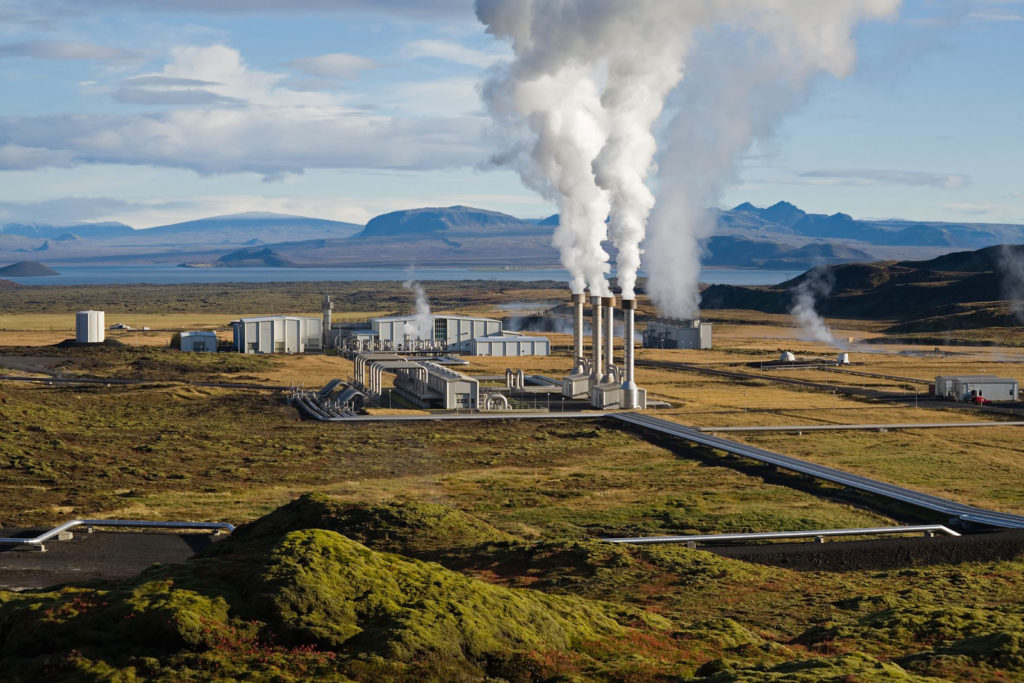
Nesjavalla power plant a geothermal power plant – Iceland is considered a very green country with it’s renewable energy.
Iceland is situated on top of the divergent boundary between the Eurasian plate and the North American plate. In addition, Iceland sits on a hotspot, the Icleand plume, which feeds heat to the island making it one of the most active when it comes to volcano eruptions. Iceland is most geologically active on these boundaries and that is where you find the most geothermal heat in the ground.
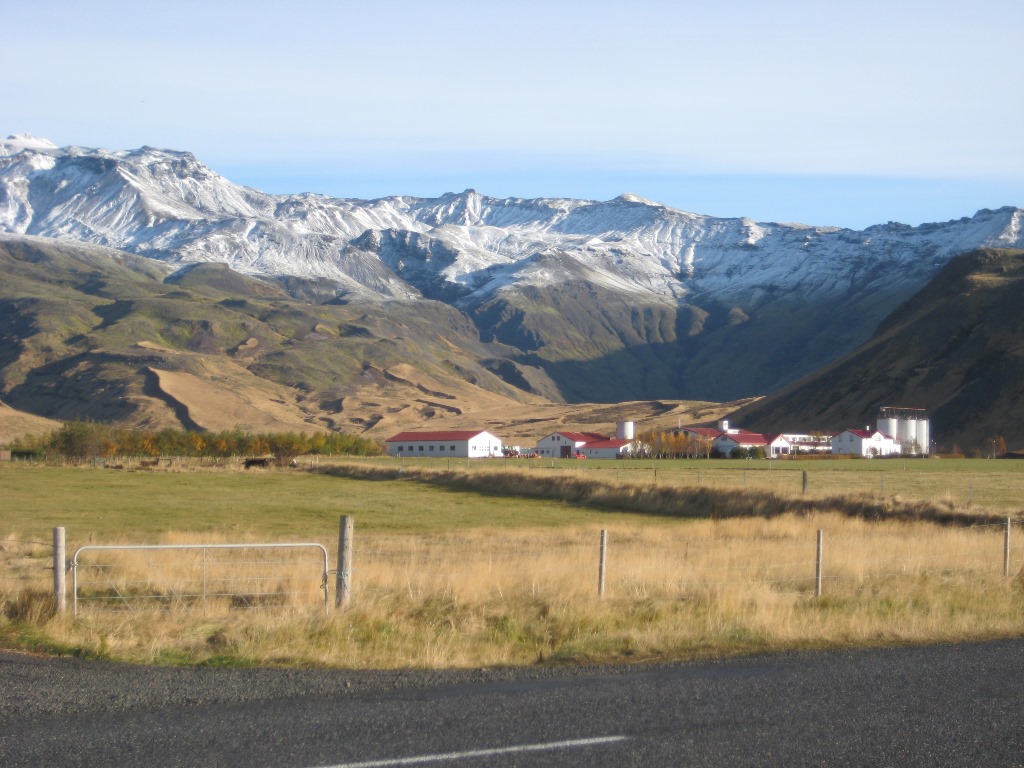
Iceland is known as the “land of fire and ice”. This is particularely true for Eyjafjallajökull glacier, a glacier with an active volano right underneath.
Taking advantage of the geothermal heat, Icelanders have built greenhouses in areas on the boundaries where vegetables and occasional fruit, like bananas, are grown. Fridheimar tomato farm does not only produce 1 tonne of tomatos every day, they sell tomato soup, made from tomatos that don‘t make it to first grade, in their small restaurant located within the greenhouse. By doing that they make sure no tomatoes go to waste, offer locally made food grown with renewable energy in a restaurant heated with geothermal heat. Now it that isn‘t sustainable, the students ask, what is?
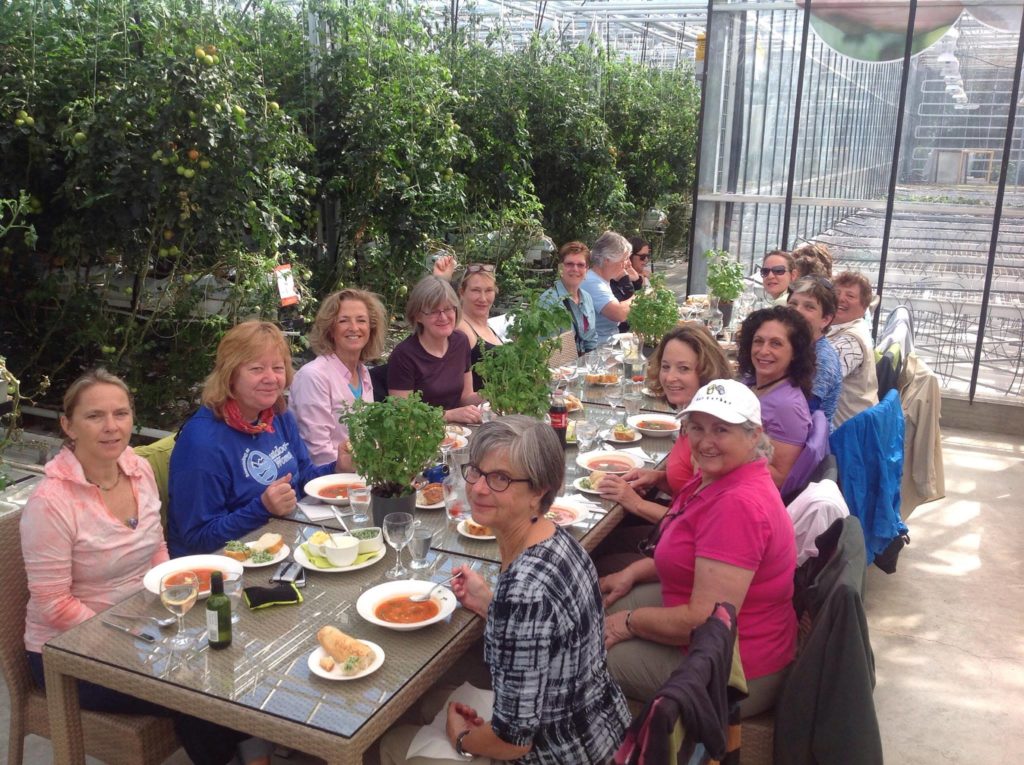
Icelanders use the geothermal heat to for growing local food in their greenhouses. Some have taken it a step further and opened up a restaurant within the greenhouse. Friðheimar Tomato farm is one of the more popular restaurants in Iceland today.
Small scale agriculture and local food production are one of the measures of sustainability. Almost all farming in Iceland is small scale and run by local families. The traditional farming is sheep farming and dairy farming and the farms can be found scattered around Iceland. In South Iceland there are many farmers that welcome students to come and learn about Icelandic agriculture and farming. The students can meet with farmers specializing in dairy, sheep or horse farming. Students meet with small scale sheep- and dairy farmers and learn about local food production, the Icelandic Skyr and the uniquness of the Icelandic wool. There are sheep farmers how design their own knitware, dairy farmers who run a geothermal borehole on their farm or farmers who aim at being 100% sustainable in the near future. The students will learn how Icelanders can be self sustained when it comes to food and what rules and regulations the Icelandic government places on local farming and food production.
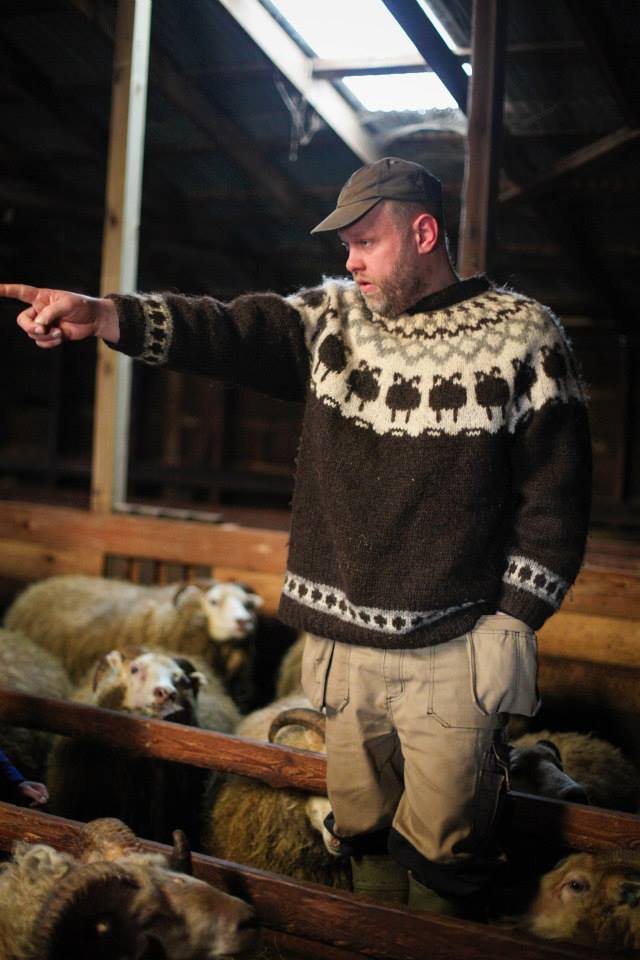
A local sheep farmer showing students on a study abroad probram in Iceland his sheep. He is wearing an Icelandic woolsweater made from the unique Icelandic wool. (photo: www.veronicaspann.com)
People choose different livestyles and some lifestyle is more sustainable than others. In South Iceland there are two sustainable communities situated, Skaftholt eco farm and Solheimar eco village. In Skaftholt the residents, some disabled, live and work together doing farmwork and handicraft. The easy going atmosphere of the farm is welcoming to the students as they get to know the cows, sheep, chicken and the cats. They also get to see how the milk and the cheese is made on the farm and peek into the woodwork and woolproduction. The residents try their best to be sustainable when it comes to food production but also sell their products to visitors. Their cheese always sells out as it is probably the best in Iceland!
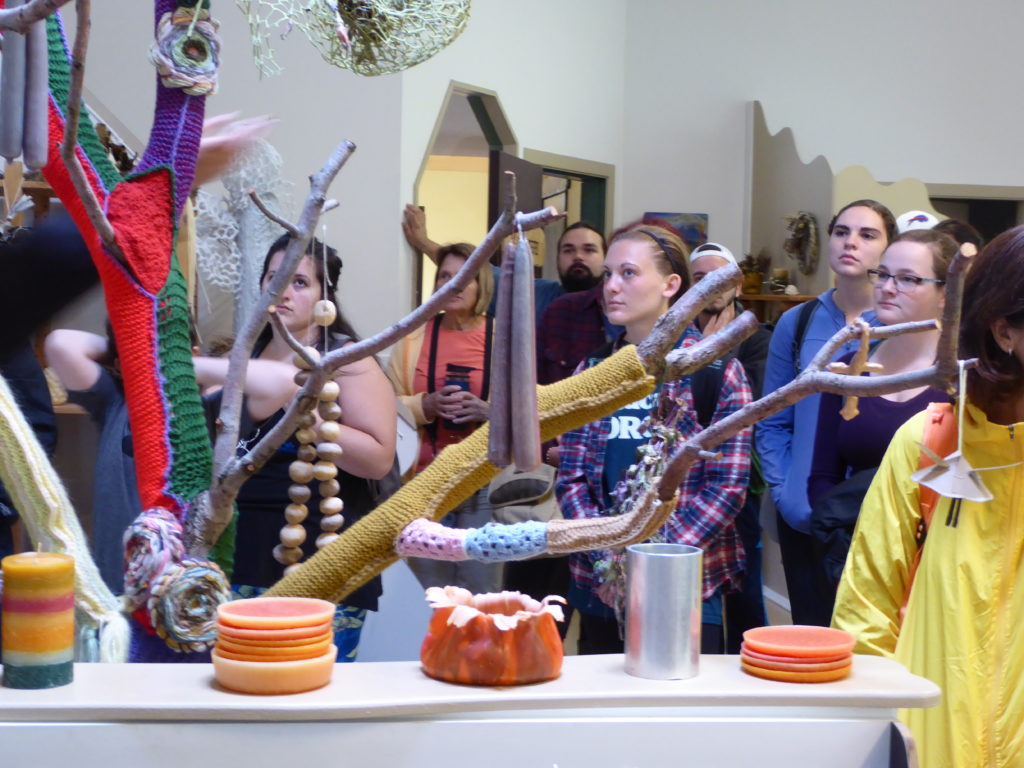
Students on a study abroad program in Iceland visiting an artworkshop in a sustainable community in South Iceland.
Understand Iceland loves to take students to Solheimar and tell them the story of Sesselja Sigmundsdottir who founded Solheimar, the first ecovillage in the world, in 1930. Sesselja had a vision of a farm where everone, disabled and not disabled, lived together on a farm and being self sufficient. Her tiny farm grew to be a community of 100 people where some of the disabled residents still live after moving there as children. The residents run different workshops, wood-, cheramics-, wool-, candle- and artworkshop. Every summer they show their artwork in an exhibition in the coffee shop. Guests can also buy coffee roasted on site or soup made from locally grown vegetables. The antroposophical atmosphere is truly inspiring in the socially sustainable community.
Even though Iceland does not seem to be the ideal place to grow your own food outdoors, there are people who do just that. In Skyggnissteinn in South Iceland the couple Dagný and Jón, on their own plot of land, grow vegetables in a biodynamic manner. They welcome students to visit their farm explaining how they grow throughtout the summer and then store the vegetables in different manner to last them throughout the winter. They are wam hosts and offer herbal tea, home made bread and honey to the studens while discussing the diffent aspects of their sustainable lifestyle.
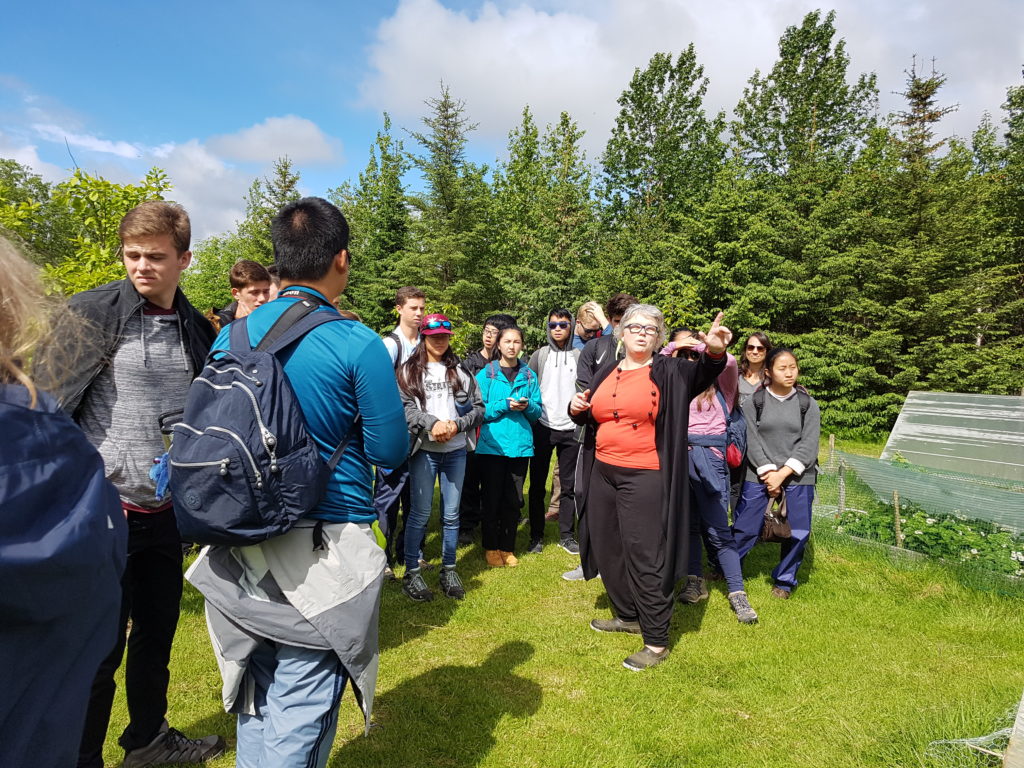
Dagný at Skyggnissteinn explaining permaculture to a group of students on a study abrod program in Iceland.
Driving east along the South coast the students are exposed to the forces of nature that are at work every minute of every day. The glaciers, volanoes and the ocean are in an endless battle shaping the dramatic nature. The students meet up with specialists in geology and glaciology doing measures and understandig the devistating effect of climate change on the Icelandic glaciers that are retriving many meters every year, some hundreds of meters. Walking on the melting ice, seeing the water run down the icy hills they truly understand the urgency of acting immitiately to the climate crisis.
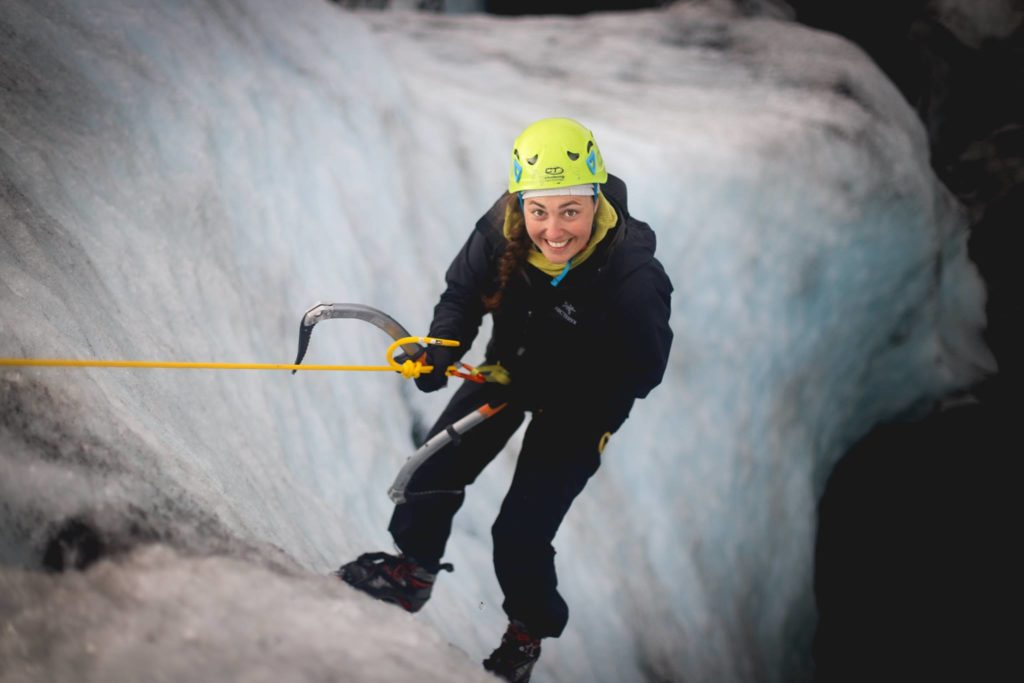
The best way to learn about the impact of climate change on glaciers is to hike a glacier. The glaciers in South Iceland are easily accessible for students to observe and learn. (photo: www.veronicaspann.com)
One of Icelands main industry and the primary source of prosperity is fisheries and fish processing. Icelanders make an effort to conserve and maintain fish stocks and marine environment and according to Icelandic sustainable fisheries the fisheries around Icleand are sustainable.
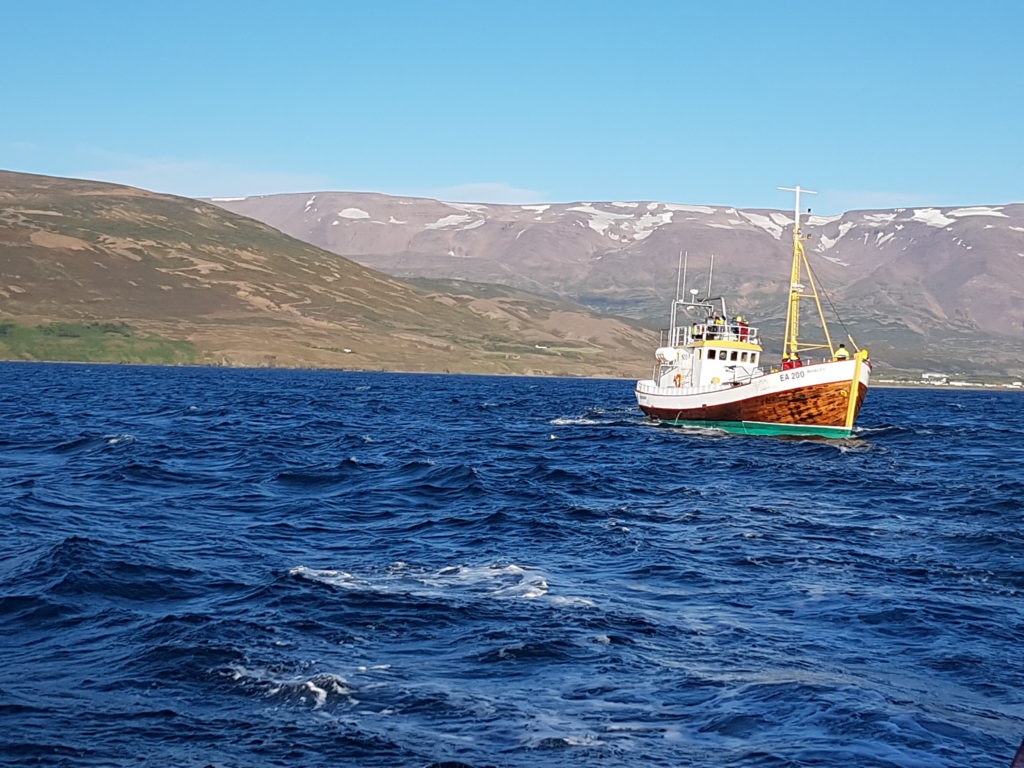
The main industry in Iceland is fisheries and fish processing and Iceland is known for it’s sustainable fisheries.
Coming from the US where most energy sources come from fossel fuels, and the way of living is often somewhat different than in Iceland, traveling around South Iceland can be life changing. It is eye opening for the students to observe geothermal powerplants and hydro dams, and to meet with locals who truly lead a sustainable lifestyle and last but not least discuss with experts who will without hesitation descripe the urgency of taking actions right away, instead of dwelling on if the source is believeble enough.
After spending time in South Iceland, the students have gained a new perspective on what sustainability is and the urgency of changing ones lifestyle in order for a brighter future.
Understand Iceland is a tour operator located in South Iceland that specializes in study abroad trips to Iceland. Please visit www.understaniceland.is and find us on Facebook, Instagram, LinkedIn and Twitter.


